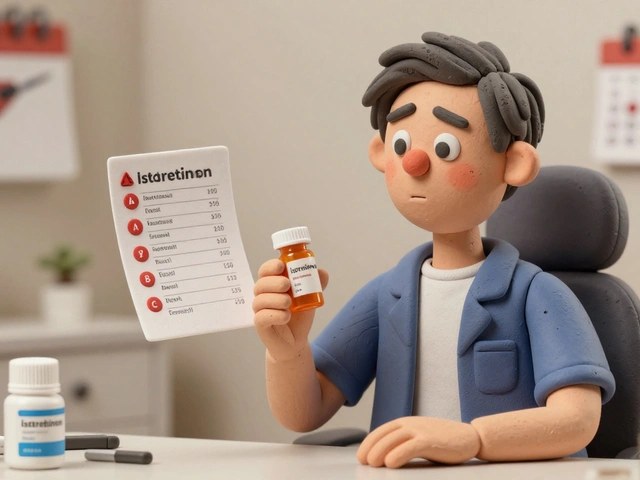Over the last 25 years, the evolution of anti-obesity drugs from Xenical to groundbreaking GLP-1/GIP agonists like Wegovy and Zepbound has been significant. These modern medications offer hope with greater BMI reductions, although challenges such as accessibility and cost remain. Understanding this progression is crucial in combating the obesity epidemic.
Weight Loss Medication: Options, Safety, and How to Choose
Some newer drugs can help people lose more than 15% of their body weight—numbers that used to seem impossible with pills. If you're thinking about medication to lose weight, it's good to know what works, what risks you face, and how to pick the right path.
Common options
GLP-1 agonists (semaglutide, liraglutide) and the newer GIP/GLP-1 combo (tirzepatide) are the most effective right now. They reduce appetite and slow stomach emptying, often causing 10–20% weight loss when paired with lifestyle changes. Orlistat works by blocking fat absorption and is available over the counter at lower doses; expect smaller weight loss but fewer systemic effects. Short-term stimulants like phentermine reduce appetite for a few weeks and may help jump-start weight loss. Naltrexone/bupropion targets reward pathways and can suit people with strong food cravings. Each drug comes with different side effects and monitoring needs.
How to pick and stay safe
Start by talking to a healthcare provider. Common criteria include BMI ≥30 or BMI ≥27 with related conditions like type 2 diabetes or high blood pressure. Think about goals, delivery (injectable vs pill), cost, and how well you tolerate side effects such as nausea, constipation, or increased heart rate. Some drugs are not safe in pregnancy or if you have certain thyroid, pancreas, or cardiac issues. Your doctor should check labs, discuss interactions, and schedule follow-ups.
If you buy medication online, insist on a prescription and pick a licensed pharmacy. Canadian pharmacies can be safe, but avoid sites that sell prescription drugs without asking for a prescription, offer suspiciously low prices, or lack clear contact and licensing information. Look for pharmacist contact, real customer reviews, and secure payment options.
Combine medication with simple, lasting habits: a protein-focused breakfast, walking 30 minutes most days, and tracking portions. Expect plateaus; adjust habits or medication with medical advice rather than quitting suddenly. Watch mood and sleep—appetite meds can affect both.
Side effects matter. Nausea and diarrhea are common with GLP-1s; orlistat can cause oily stools and vitamin loss. Rare but serious issues include pancreatitis, gallbladder problems, and suicidal thoughts with some drugs. Report alarming symptoms right away and keep scheduled bloodwork.
If cost is a barrier, ask about patient assistance programs, generic alternatives, or short-term options to start progress. Remember, medication helps many people when used as part of a plan—it's not a quick fix, but it can change the odds in your favor when you pair it with support and sensible habits.
Track progress beyond the scale. Measure waist, energy, sleep, and blood pressure. Ask your clinician about setting realistic short-term targets—losing 5-10% in six months is a common goal that improves health markers. Use a simple app or a notebook to record meds, symptoms, and appetite changes.
If you have questions about buying from Canadian pharmacies, our site offers guidance and reviews to help you check legitimacy. Talk openly with your provider about cost and alternatives; many doctors will work with you to find a safe, affordable plan. Start by asking your clinician.






